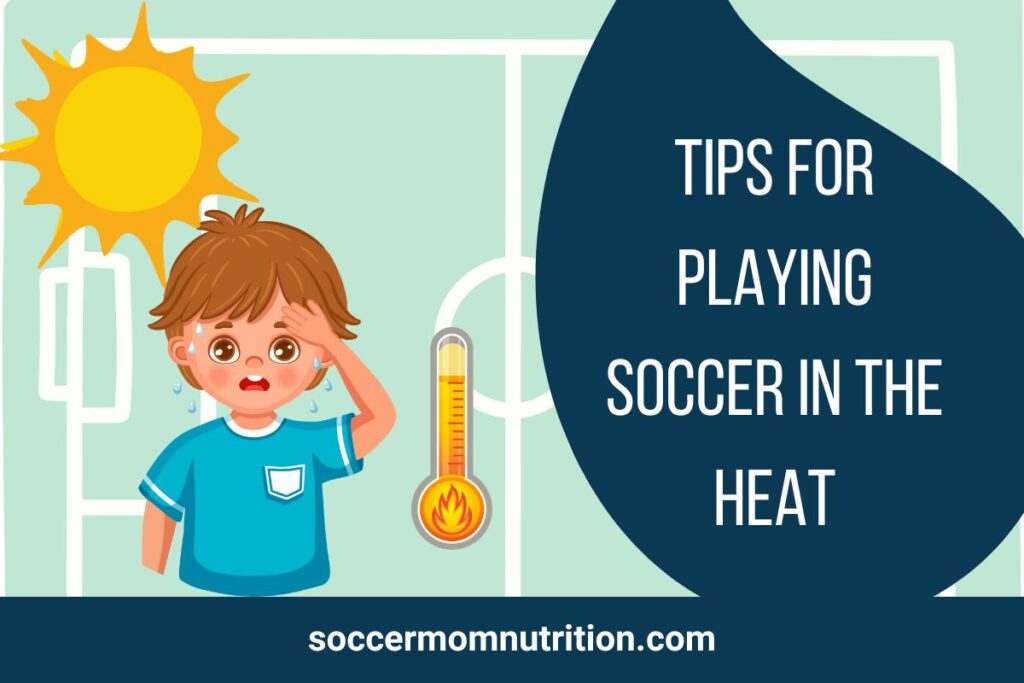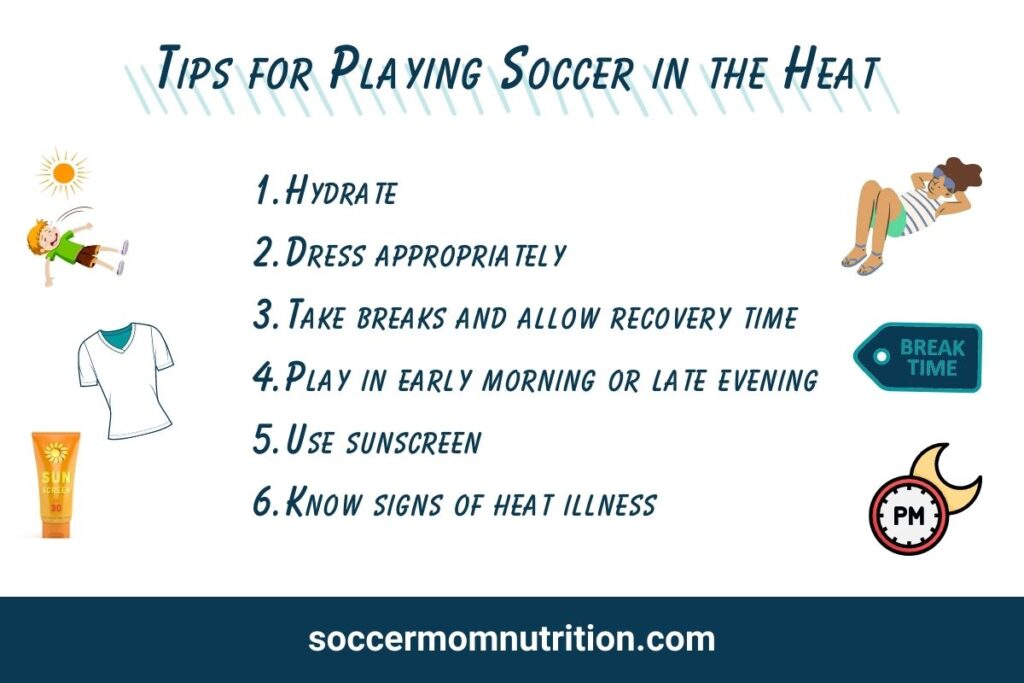Tips for Playing Soccer in the Heat
Soccer is one of those great sports that can be played year-round, but when the temperature rises, playing soccer in the heat can be challenging. You’ll want to take extra steps to stay cool and replace fluids.
When playing in high temperatures and extreme heat conditions, you’re more likely to sweat heavily which results in dehydration, if you’re not replacing your lost fluids.
During play in high humidity, your body also struggles to cool down because there’s no evaporation of sweat.
Not only will your performance suffer, but you’re at risk for life threatening symptoms of heat illness. These can appear if you’re limiting fluids, don’t have an adequate hydration plan and ignoring thirst.
Read on for tips stay safe and perform your best while playing soccer in the heat.

Please note that this article contains affiliate links. If you click one of these links and make a purchase, we may earn a commission. As an Amazon Associate, we earn from qualifying purchases.
1. Hydrate, hydrate, hydrate
One of the most important things to do when playing soccer in hot weather is to stay hydrated. Hydration is crucial when playing soccer in the heat, as it helps regulate your body temperature and prevent heat-related illnesses.
Make sure you drink plenty of water before, during and after your soccer training, soccer practice or game. Studies show that coming into a game or practice mildly dehydrated can effect your health and performance. (1)
Therefore, it’s recommended to have an optimal hydration plan for soccer players.
Tips to help you stay hydrated while playing soccer in the heat
- Drink plenty of fluids: Drink at least 16-20 ounces of water two hours before your game and continue to drink fluids every 15-20 minutes during play.
Water is always the best option, but sports drinks can also be beneficial as they contain electrolytes. In fact some research shows a 6-8% carbohydrate sports drink can be more effective at maintaining hydration in heat. (2)
- Use sports drinks with sodium: Sports drinks that contain sodium can help replace the salt lost through sweating and stimulate thirst. (3) Sodium is an important electrolyte that helps regulate fluid balance in your body.
Look for sports drinks with at least 110-200 mg of sodium per 8 oz serving.
- Avoid sugary and carbonated drinks: Sugary drinks, such as soda and juice, can actually dehydrate you as they delay digestion and draw water into your stomach to aid in digestion. Stick to water and sports drinks.
- Drink before you feel thirsty: Thirst is a sign that your body is already dehydrated. Don’t wait until you feel thirsty to drink fluids, as this could already be too late. Make sure to drink fluids regularly throughout the game.(4)
- Encourage water breaks throughout the game. Soccer isn’t known for stoppage time and drink breaks. However, parents and coaches should ensure that adequate and frequent water breaks are allowed throughout the game.
- Set hydration goals. Setting hydration goals, such as filling your 32 oz water bottle twice outside of game prep and play, can help to make sure you’re getting enough fluids throughout the day to stay hydrated.
2. Dress Appropriately
Wear lightweight, breathable clothing that allows sweat to evaporate quickly. Avoid dark colors and choose light-colored clothing that reflects sunlight instead of absorbing it. Consider wearing a hat or visor to protect your face from the sun and keep you cooler.
3. Take breaks and allow recovery time
If possible, take breaks during the game to rest and cool down. If you’re feeling overheated or fatigued, take a break on the sidelines and in the shade.
It’s better to take a short break and return to the game refreshed than to push yourself too hard and risk heat exhaustion or heat stroke.
Research also shows that allowing more recovery time between games played in hot weather can potentially reduce the likelihood of heat related injury. (5) So when possible, try to schedule games to allow for a long recovery period.
Consider having popsicles or cool drinks such as smoothies as a post game snack so that you can also help your body cool down.
4. Play in the early morning or late evening
Try to schedule your soccer games for early morning or late evening, when the temperature is cooler. If you have no choice but to play during the hottest part of the day, take extra precautions to stay cool and hydrated.
5. Use sunscreen
Apply sunscreen with an SPF of at least 45 to protect your skin from harmful UV rays. Be sure to reapply every two hours, or more often if you’re sweating heavily.
6. Know the signs of heat-related illness
Be aware of the signs of heat cramps, heat exhaustion and heat stroke. (6, 7) Always seek medical help for any heat related illness. Below are some symptoms to watch out for.
Symptoms of heat cramps
- Thirst
- Chills
- Vomiting
- Sweating
- Clammy skin
- Rapid heart beat
- Nausea
Treatment for heat cramps
- Drinking ½ cup of electrolyte containing fluids every 10-15 minutes
- Stop physical activity
- Massage and stretch affected muscles
- Stay in the shade
- Remove additional layers of clothing
Symptoms of heat exhaustion and heat stroke
- Nausea
- Vomiting
- Dizziness
- Lightheaded
- Headache
- Thirst
- Weakness
- Excessive sweating
- Shortness of breath
- Visual disturbances
Treatment for heat exhaustion
- Seek medical attention
- Move to a cool place

Final thoughts
Playing soccer in the heat can be challenging, but by following these tips, you can stay safe and perform your best.
Remember to stay hydrated, dress appropriately, take breaks, play during cooler times of the day, use sunscreen and know the signs of heat-related illness.
You may also want to consider clipping a cooling towel onto your gear bag for those days when its’ really hot.
Stay cool and have fun out there!
Join our mailing list and get our FREE Pre-Activity Fueling Guide.
Stephanie Magill, MS, RD, CD, FAND has over 22 years of experience in public health and nutrition. As a performance registered dietitian nutritionist, Stephanie specializes in sports nutrition and provides simple and actionable information so that athletes can be well fueled for high performance on and off the field. Stephanie has a Master’s Degree in Nutrition and is a Fellow of the Academy of Nutrition and Dietetics.

